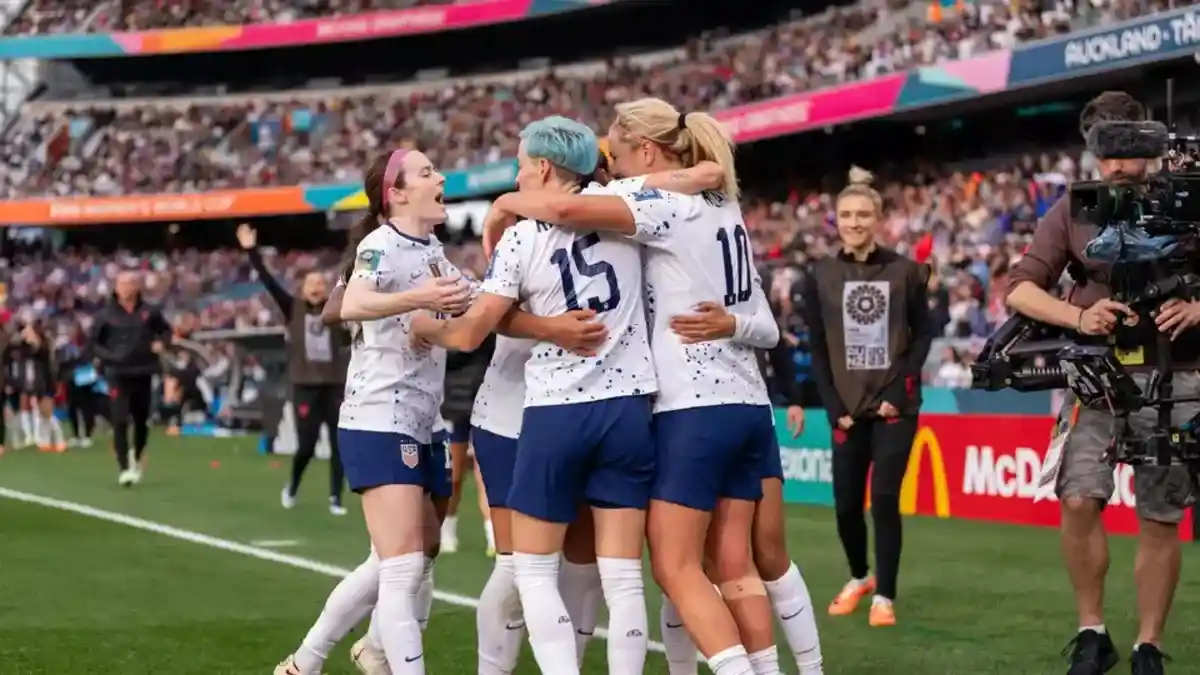Goalkeeping has been of the highest caliber since the 2023 FIFA Women’s World Cup in Australia and New Zealand began.
Women’s World Cup 2023
Several players, including England’s Mary Earps, Haiti’s Kerly Théus, Jamaica’s Rebecca Spencer, Nigeria’s Chiamaka Nnadozie, Panama’s Yenith Bailey, and the Philippines’ Olivia Davies-McDaniel, made spectacular, acrobatic, eye-popping stops in the early games of the group stage.
After the Americans’ 1-1 draw with the Netherlands on Wednesday, starting goalkeeper Alyssa Naeher of the United States told FOX Sports in the mixed zone, “I’ve seen several phenomenal saves from every goalkeeper that’s played so far.”
Naeher has been the backstop for the championship favorites and two-time defending champions, and he hasn’t had as much work as most keepers have thus far. The 35-year-old has officially faced just one shot on goal in two games: Dutch forward Jill Roord’s goal, which was one of the critical moments in the USWNT repeating. The stop she made against England’s Steph Houghton on a penalty in extra time of the 2019 semifinals was one of the key moments.
On the other hand, goaltending has taken center stage for practically every other squad. The numbers support this.
In comparison to just 25 during the whole group stage four years ago in France, 23 clean sheets had been recorded through Friday’s match between Argentina and South Africa.
Three games went without a score, the most notable of which was Jamaica vs. France, in which Spencer stopped five shots from Les Bleus.
Keepers were stopping 74% of all on-target efforts through the first half of the first round, up from 70% in France and 65% at the Women’s World Cup 2015 championship in Canada.
The development is not a coincidence.
“People are starting to realize that anything is possible if you have a competent goalkeeper; your goalkeeper may maintain you in a game,” said former Canadian goalkeeper Karina LeBlanc, who has played in five World Cups and is currently serving as a commentator for FOX Sports in Sydney this summer.
Even FIFA is concentrating on goalkeeping analysis during this Women’s World Cup. Everything contributes to it.
The development of the club game has also been very important.
The National Women’s Soccer League had only been around for a year ten years prior. At that time, few teams had specialized goalkeeper coaches.
LeBlanc, who is also the general manager of the NWSL champion Portland Thorns, said that during his playing career, at one point, the team’s goalkeeper served as an equipment coach. “Now, these are full-time positions.”
Read Also: Joe Burrow injury update
The same thing has happened in Europe, where interest in women’s club soccer has soared in recent years. There has also been an increase in funding for keeper training.
Naeher, a player for the Chicago Red Stars of the NWSL, stated that “the leagues all over the world are getting better and better.” Every goalie has the opportunity to develop, change, and face elite competition every week.
Not just in video games.
Naeher continued, “Even when you train against your teammates every day, you’re getting better because the quality is just very high.” You can see the effects of that now.
The Women’s World Cup’s high stakes and increased prize money have caused national teams to place more attention on getting their keepers ready as much as possible. There is a lot more data available for countries’ keeper coaches to sift through thanks to the greater exposure of the women’s club game. It has changed things. At Australia-New Zealand 2023, just four of the first eight penalty kicks attempted were successfully converted. Three of them were kept alive.
In Nigeria’s opening game, Nnadozie deflected a 12-yard attempt by Christine Sinclair of Canada, the best scorer in men’s or women’s international soccer history. Jennifer Hermoso, who leads Spain in all-time goals, was stopped by Daniela Solera of Costa Rica. In the Americans’ opening 3-0 victory, Tran Thi Kim Thanh of Vietnam stoned American star, Alex Morgan.
Anyone facing Alex Morgan, for instance, will be aware of how frequently she has shot to the right and how frequently she has gone left, according to LeBlanc. “Goalkeeper coaches research the opponents’ shooters. Everything is being studied by them.
Additionally, keepers are becoming more athletic. LeBlanc noted that while shots into the top corners used to be practically unavoidable in women’s soccer, that hasn’t been the case this month.
Because of the past exploits of now-retired World Cup heroes like Brianna Scurry and Hope Solo, the position has grown more alluring to rangier, stronger young people.
The cool factor of keeping has increased tremendously. More young ladies than ever before desire to play goal. And once they’re a part of the so-called “goalkeepers union,” they’re given top-notch, specialized training.
LeBlanc remarked that Mary Earps had probably practiced making that save countless times before she made it against Haiti. That kind of saving wasn’t used when I was playing. That is not by chance. To prepare for that, they must train.
Today’s keepers are also more well-rounded soccer players than their predecessors. The previous ten years have seen a significant emphasis on developing possession from back to front on both the men’s and women’s sides of the sport.
Keepers no longer frequently simply send the ball as far as they can. They are supposed to be as adept at passing as they are at blocking shots.
LeBlanc noted that the goalie is now the first line of offense rather than the last line of defense. “Goalkeepers now receive more training than just short-stopping. Keepers are a crucial component to breaking a high press, as you can see now.
“I believe it adds to the fun. Regarding how her status has altered even since her first World Cup eight years ago, Naeher continued, “It makes it intriguing.

